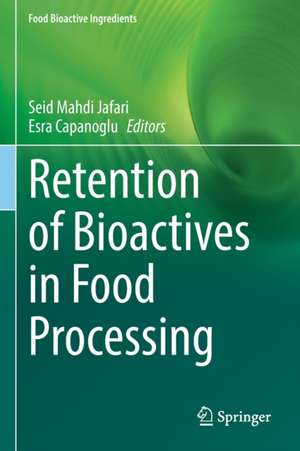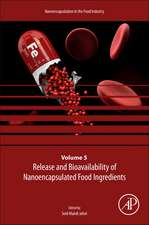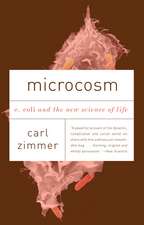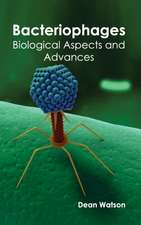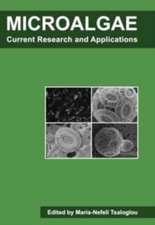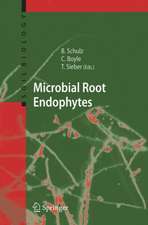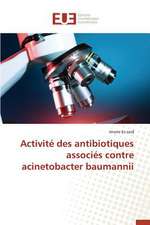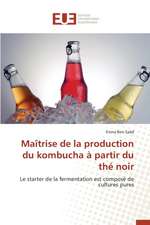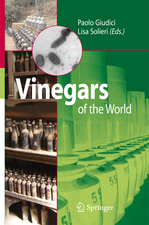Retention of Bioactives in Food Processing: Food Bioactive Ingredients
Editat de Seid Mahdi Jafari, Esra Capanogluen Limba Engleză Paperback – 26 iul 2023
This book provides a critical evaluation of the effects of conventional, novel non-thermal, and thermal food processing techniques on the retention and bioaccessibility of bioactive compounds in food materials. Within these three categories, many different processing methods are included: fermentation/germination, drying, extrusion, and modified atmosphere packaging, as well as novel technologies, such as microwave heating, ultrasound, high pressure processing, ozonation, and membrane separation processes.
| Toate formatele și edițiile | Preț | Express |
|---|---|---|
| Paperback (1) | 1559.01 lei 6-8 săpt. | |
| Springer International Publishing – 26 iul 2023 | 1559.01 lei 6-8 săpt. | |
| Hardback (1) | 1565.29 lei 6-8 săpt. | |
| Springer International Publishing – 26 iul 2022 | 1565.29 lei 6-8 săpt. |
Preț: 1559.01 lei
Preț vechi: 1901.22 lei
-18% Nou
Puncte Express: 2339
Preț estimativ în valută:
298.31€ • 325.06$ • 251.37£
298.31€ • 325.06$ • 251.37£
Carte tipărită la comandă
Livrare economică 23 aprilie-07 mai
Preluare comenzi: 021 569.72.76
Specificații
ISBN-13: 9783030968878
ISBN-10: 3030968871
Pagini: 614
Ilustrații: X, 614 p. 112 illus., 70 illus. in color.
Dimensiuni: 155 x 235 mm
Greutate: 0.86 kg
Ediția:1st ed. 2022
Editura: Springer International Publishing
Colecția Springer
Seria Food Bioactive Ingredients
Locul publicării:Cham, Switzerland
ISBN-10: 3030968871
Pagini: 614
Ilustrații: X, 614 p. 112 illus., 70 illus. in color.
Dimensiuni: 155 x 235 mm
Greutate: 0.86 kg
Ediția:1st ed. 2022
Editura: Springer International Publishing
Colecția Springer
Seria Food Bioactive Ingredients
Locul publicării:Cham, Switzerland
Cuprins
Section 1: Introduction to bioactive compounds and food processes.- 1. An overview of food bioactive compounds and their health-promoting features.- 2. Different food processing technologies; a general background.- Section 2: Influence of conventional processes on food bioactive compounds.- 3. Postharvest Handling and Preparation of Foods for Processing.- 4. Thermal Treatments.- 5. Frying, baking and cooking.- 6. Chilling, Freezing and Thawing.- 7. Drying.- 8. Evaporation.- 9. Canning.- 10. Juice Processing.- 11. Extrusion.- 12. Fermentation and Germination.- 13. Extraction processes (SFE).- 14. Modified atmosphere packaging.- Section 3: Influence of novel thermal processes on food bioactive compounds.- 15. Microwave Heating.- 16. Ohmic Heating.- 17. Infrared Heating.-18. Radiofrequency and dielectric heating.- Section 4: Influence of novel non-thermal processes on food bioactive compounds.- 19. Irradiation.- 20. High Pressure Processing.- 21. Pulsed electric field (PEF), Pulsed X-Ray and Pulsed UV Processes.- 22. Ultrasound Treatments.- 23. Membrane separation processes.- 24. Ozonation, and plasma processing.- 25. Nano-based food processes.
Notă biografică
Esra Capanoglu is an Associate Professor in the Department of Food Engineering at Istanbul Technical University in Istanbul, Turkey.
Prof. Seid Mahdi Jafari received his PhD in Food Process Engineering from the University of Queensland (Australia), in 2006. Now, he is a full-time Prof. of GUASNR (Iran), part-time Prof. in UVigo (Spain), and adjunct Prof. in SINANO (China). He has published > 350 papers in International Journals (h-index=64 in Scopus) and 80 book chapters/36 books with Elsevier, Springer, and Taylor & Francis. Selected achievements:
- one of the top 1% world scientists by Thomson Reuters (2015)
- one of the top national researchers by the Iranian Ministry of Science, Research, and Technology (2017)
- one of the world’s highly cited researchers by Clarivate Analytics (Web of Science), in 2018, 2019 and 2020
- a top reviewer in the field of agricultural and biological sciences by Publons (2018 and 2019).
- one of the top 1% world scientists by Thomson Reuters (2015)
- one of the top national researchers by the Iranian Ministry of Science, Research, and Technology (2017)
- one of the world’s highly cited researchers by Clarivate Analytics (Web of Science), in 2018, 2019 and 2020
- a top reviewer in the field of agricultural and biological sciences by Publons (2018 and 2019).
Textul de pe ultima copertă
Bioactive compounds in food, known for their positive health effects, can be lost during handling after harvest, processing and storage. While most foods are exposed to processing to increase shelf life and edibility and to ensure microbial safety, conventional processing methods may have disadvantages, such as decreasing the nutritional quality of foods, long processing times, high temperature and high energy uses. For these reasons, novel non-thermal food processing technologies (including HPP, ultrasound) and novel thermal food processing technologies (including microwave/Ohmic heating) have become widespread.
This book provides a critical evaluation of the effects of conventional, novel non-thermal, and thermal food processing techniques on the retention and bioaccessibility of bioactive compounds in food materials. Within these three categories, many different processing methods are included: fermentation/germination, drying, extrusion, and modified atmosphere packaging, as well as novel technologies, such as microwave heating, ultrasound, high pressure processing, ozonation, and membrane separation processes.
This book provides a critical evaluation of the effects of conventional, novel non-thermal, and thermal food processing techniques on the retention and bioaccessibility of bioactive compounds in food materials. Within these three categories, many different processing methods are included: fermentation/germination, drying, extrusion, and modified atmosphere packaging, as well as novel technologies, such as microwave heating, ultrasound, high pressure processing, ozonation, and membrane separation processes.
Caracteristici
Critically evaluates the effects of conventional, novel non-thermal, and thermal food processing techniques Includes sections on fermentation/germination, drying, extrusion, and modified atmosphere packagin Fills the literature gap between nutrition and food processing
